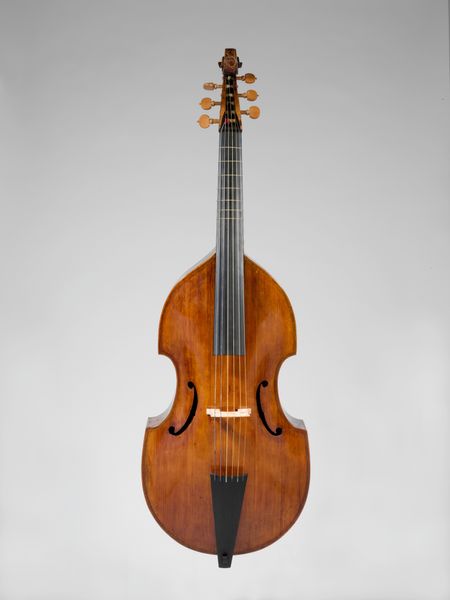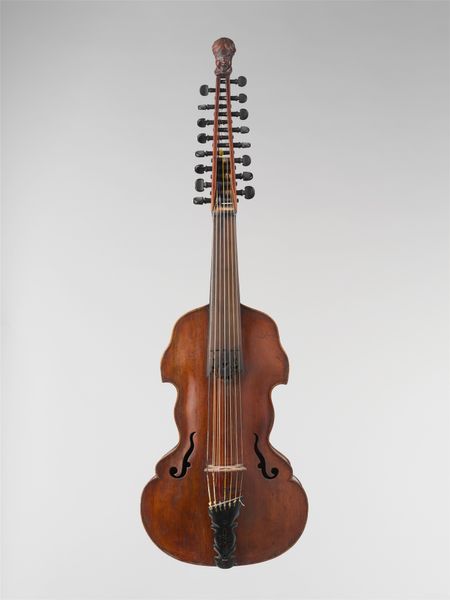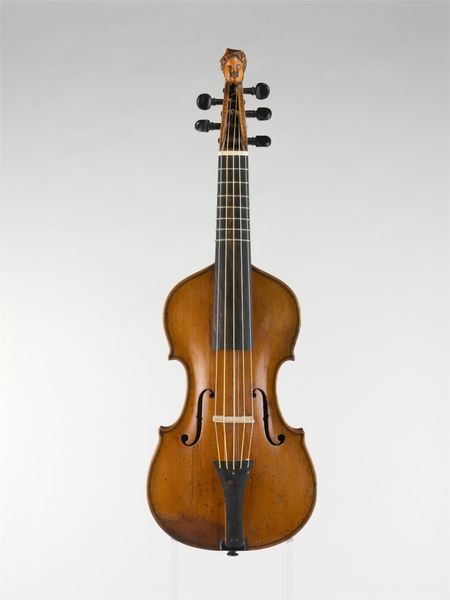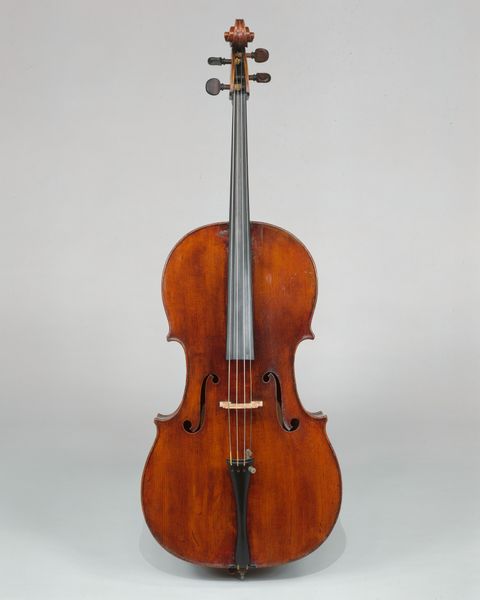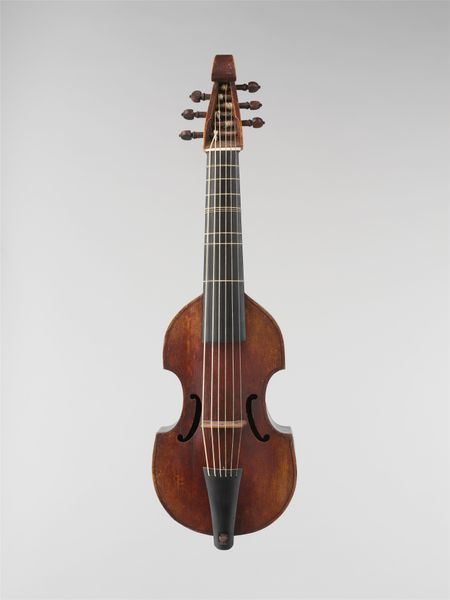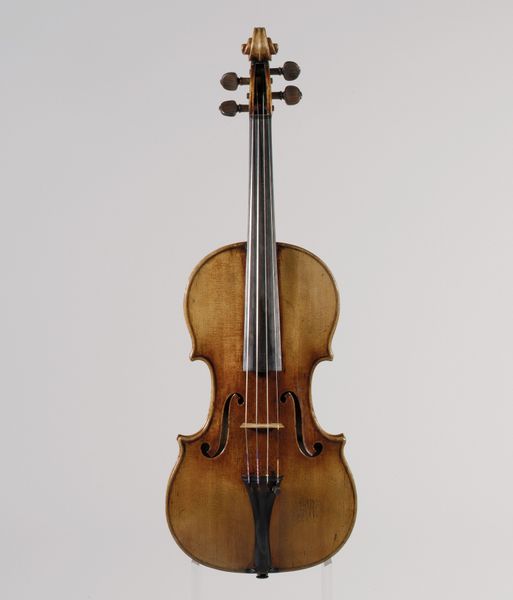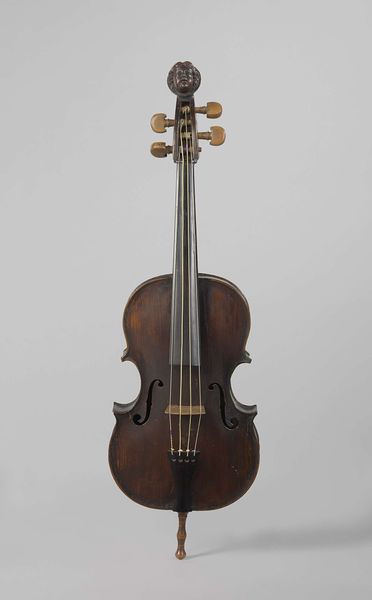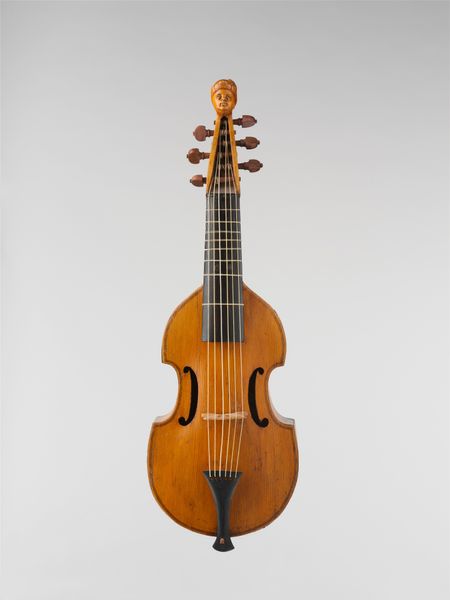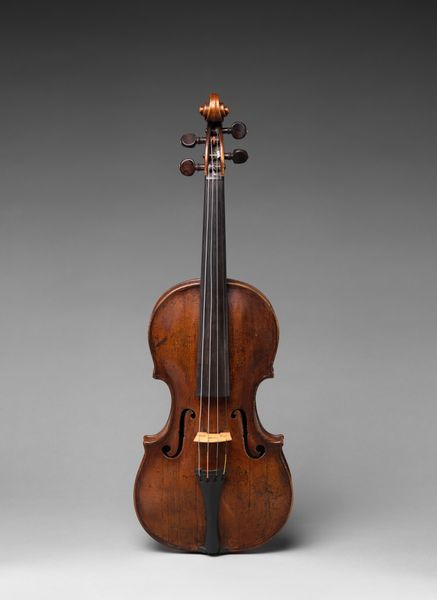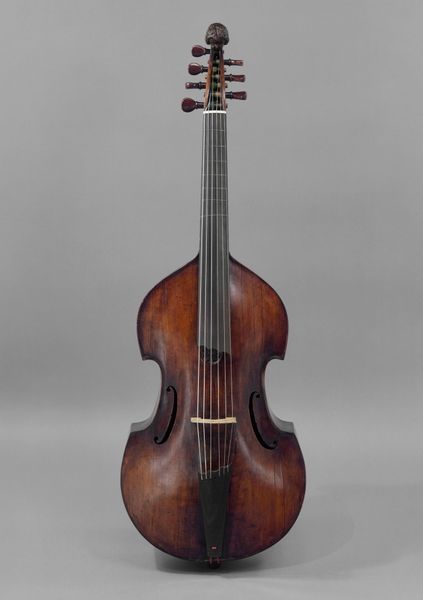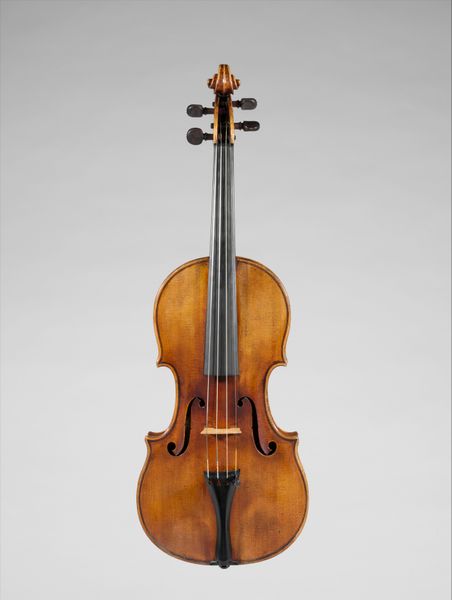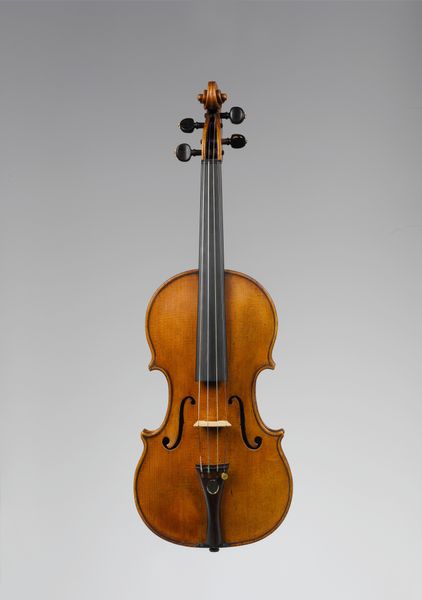
wood
#
baroque
#
wood
Dimensions: 47 1/4 × 14 5/8 × 9 3/4 in. (120 × 37.1 × 24.8 cm)
Copyright: Public Domain
Curator: Here we see a Bass Viola da Gamba, made sometime between 1700 and 1750 by Andreas Jais. It's a beautiful example of Baroque instrument making, currently residing here at the Metropolitan Museum. Editor: Wow, it looks like a cello's fancier, more theatrical cousin. The wood glows with this warm, amber light... you can almost hear it humming just standing here. Curator: That warmth you’re seeing comes from the wood itself and how the varnish has aged. Remember, these instruments weren’t just functional, they were statements. To own one like this suggested status. Playing it signified refinement. The whole aesthetic of the Baroque was about impressing an audience through a mastery of the senses, auditory and visual. Editor: Refinement...right. The sound of privilege, then? But putting that aside for a moment, look at the details. All those curves, that almost sorrowful shape. And then that tiny carved face up by the tuning pegs! I imagine music coming from it was a bit melancholy, certainly romantic... but very intentional and disciplined. Not chaotic like a wild punk band from my past, for example! Curator: Interesting thought. Remember, the viola da gamba had a particular role in Baroque music, often accompanying vocal performances or adding depth to chamber ensembles. It provided a grounded texture—quite the opposite of chaos! Also, these instruments had to survive politically tumultuous eras. Ownership meant that these were symbols of wealth, so protecting that value through generations has shaped our current display practices and ideas about them today. Editor: Right. All that formality. And knowing now about the face carved on top... almost like it oversaw this serious production. I admit though, its survival says something. Maybe more than luxury, maybe an attempt at something that echoes down through all that time? Thanks for the deep dive. It changes how I see—and maybe one day hear—this piece. Curator: My pleasure. Indeed, seeing the object within its full historical context helps us appreciate its true impact and appreciate what's being inherited by current makers and users of similar instruments today.
Comments
No comments
Be the first to comment and join the conversation on the ultimate creative platform.

